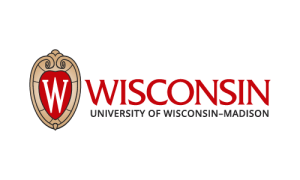University of Wisconsin-Madison: An Indigenous story map experience about water
A new website is available that details what Indigenous communities in the Upper Midwest are doing to conserve and protect water. Named Bimaadiziwin Nibi, Water is Life, the story map is divided into sections, each centered around a different environmental issue. These include wild rice, fish, nonlocal beings (invasive species), mining, contaminants and beach sampling. Within each section are photos, reports and videos from tribal natural resource departments and a summary of interviews with scientists.
The project was created by Brenna DeNamur during her internship with Wisconsin Sea Grant in 2020. DeNamur, a recent University of Wisconsin-Madison graduate, partnered with the Great Lakes Indian Fish and Wildlife Commission (GLIFWC) to develop the content in a culturally responsive manner.
Image courtesy of the Great Lakes Indian Fish and Wildlife Commission
“It’s my hope that visitors to the site will gain a better understanding of the challenges faced in the intersection of conversation efforts and tribal culture, and that they be introduced to the diverse voices working in this area,” DeNamur said.
For instance, in the nonlocal beings section, DeNamur writes, “Although Indigenous science teaches respect and consideration for all, these nonlocal beings still pose a threat to biodiversity and the individual species, such as manoomin (wild rice) and ogaa (walleye), that Native Americans have had deep relationships with for generations.”
In response, GLIFWC has taken action against nonlocal beings. They conduct surveys, control actions and follow up monitoring for both terrestrial and aquatic species. The web page details how the commission divides its efforts into prevention, early detection and rapid response, control and management, research, and cooperation and coordination.
“This story map is a great tool for understanding how the collaboration of Traditional Ecological Knowledge and Western Science methodologies can produce strategic and respectful conservation efforts concerning water throughout the Ceded Territories and beyond,” said Hannah Arbuckle, GLIFWC Outreach Coordinator.
Anne Moser, Wisconsin Sea Grant senior special librarian/education coordinator and DeNamur’s mentor, hopes to see the story map grow in the coming years. “I am grateful and honored to collaborate with GLIFWC on this project. It helped me gain a deeper understanding about Great Lakes literacy and how to incorporate Indigenous approaches into my work in education and outreach.”
“Ultimately, teaching Indigenous science is about understanding the world from different perspectives. If more people lived by this, we could sustain a healthier, more prosperous world,” DeNamur said.

